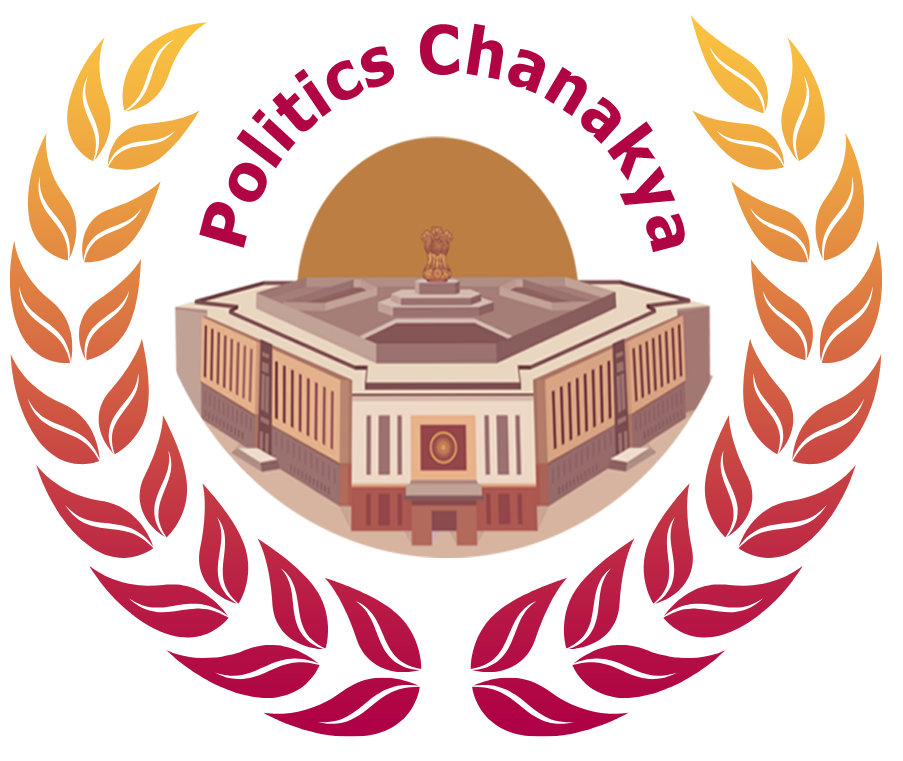Dynamic Online Press Releases
- Introduction
- The Evolution of Press Releases in the Digital Age
- Strategies for Crafting Dynamic Online Press Releases
- Leveraging Multimedia and Interactive Elements
- Targeting and Distribution
- SEO Optimization for Greater Reach
- Social Media Integration
- Measuring the Impact
- Adapting to the Changing Media Landscape
- Crisis Communication through Press Releases
- Legal and Ethical Considerations
- Best Practices for Political Press Releases
- Case Studies
- Looking Ahead: The Future of Political Communication
- Conclusion

Introduction
The Importance of Online Press Releases in Modern Politics: Online press releases are a vital tool for political entities to communicate with the public, media, and stakeholders. They offer a direct channel to disseminate information, clarify positions, announce policies or campaigns, and respond to current issues. In an era where digital media shapes public opinion, these releases are more crucial than ever.
Introduction to Politics Chanakya’s Dynamic Approach: Drawing from the strategic insights of the ancient Indian philosopher Chanakya, a dynamic approach to political communication involves being adaptive, proactive, and strategic. In the context of online press releases, this means creating content that is not only informative but also engaging, timely, and in tune with the current digital media landscape.
The Evolution of Press Releases in the Digital Age
Traditional vs. Online Press Releases: While traditional press releases were often text-heavy and aimed primarily at journalists, online press releases have evolved to be more dynamic and multimedia-rich, targeting a broader audience including the public. The digital format allows for the integration of videos, images, hyperlinks, and social media elements, making them more interactive and accessible.
The Impact of Digital Media in Indian Politics: In India, where digital media consumption is rapidly growing, online press releases have become an essential part of political communication strategies. They are instrumental in shaping narratives, addressing the electorate, and influencing media coverage in a landscape where news and information travel rapidly through social media and online news platforms.
Strategies for Crafting Dynamic Online Press Releases
Key Components of an Effective Press Release: A compelling online press release should include a clear and engaging headline, a concise and informative body that gets straight to the point, multimedia elements for greater engagement, and a call to action. It should also provide contact information and links for additional resources or information.
Tailoring Content for Political Messaging: The content of the press release should be tailored to convey the political entity’s message effectively. This involves using language that resonates with the target audience, aligning the release with current issues or public sentiments, and highlighting key policies or achievements. Understanding the political landscape and audience sentiment is crucial in crafting a message that is both impactful and relevant.
Leveraging Multimedia and Interactive Elements
Incorporating Images, Videos, and Infographics: Multimedia elements like images, videos, and infographics can significantly enhance the appeal of an online press release. They make the content more engaging and easier to understand, especially when conveying complex political messages or data. Videos can be particularly effective in personalizing the message, showcasing the political figures behind the campaign, and providing a more direct form of communication.
Enhancing Engagement with Interactive Features: Interactive features such as clickable links, social media sharing options, and embedded social media posts can increase user engagement. These features not only make the press release more engaging but also facilitate the spread of the content across various platforms, thereby enhancing its reach.
Targeting and Distribution
Identifying the Right Channels for Distribution: Choosing the right channels for distributing the press release is crucial. This includes not only traditional news outlets but also digital platforms where the target audience is likely to be active, such as political blogs, online news portals, and social media platforms. The choice of channels will depend on the demographics of the target audience and where they are most likely to consume news and information.
Reaching the Target Audience Effectively: To effectively reach the target audience, it’s important to understand their media consumption habits and preferences. This might involve segmenting the audience and tailoring the distribution strategy accordingly. For instance, press releases aimed at younger audiences might be distributed differently than those targeting older demographics.
SEO Optimization for Greater Reach
Utilizing Keywords and SEO Techniques: SEO optimization is crucial for ensuring that the press release is easily discoverable online. This involves using relevant keywords that the target audience is likely to use when searching for political information. Careful crafting of the press release’s title, headers, and content with these keywords can significantly improve its visibility in search engine results.
Maximizing Visibility in Search Results: Beyond keyword optimization, other SEO techniques can be employed to maximize visibility. This includes optimizing meta descriptions, using alt tags for images, and ensuring that the content is mobile-friendly, as a significant portion of online content consumption in India occurs via smartphones.
Social Media Integration
Promoting Press Releases on Social Platforms: Social media platforms are essential for amplifying the reach of online press releases. Sharing press release content on platforms like Facebook, Twitter, Instagram, and LinkedIn can significantly boost visibility. Tailoring snippets or highlights of the press release for each platform, using engaging captions, and including relevant hashtags can enhance engagement and shareability.
Engaging with the Audience on Social Media: Beyond promotion, social media offers an opportunity to engage directly with the audience. Responding to comments, engaging in discussions related to the press release, and encouraging followers to share the content can foster a deeper connection with the audience and increase the press release’s impact.
Measuring the Impact
Tools and Metrics for Evaluating Success: Various tools and metrics are available to measure the impact of online press releases. Analytics tools provided by social media platforms, along with website analytics like Google Analytics, can track engagement metrics such as shares, likes, comments, click-through rates, and website traffic generated by the press release.
Analysing Audience Engagement and Reach: Evaluating the success of a press release involves analyzing both qualitative and quantitative aspects of audience engagement. Quantitative measures include the aforementioned metrics, while qualitative analysis might look at the nature of audience interactions, the sentiment expressed in comments, and the overall reception of the message.
Adapting to the Changing Media Landscape
Staying Ahead of Digital Trends: The digital media landscape is constantly evolving, with new platforms, algorithms, and user behaviors emerging regularly. Political campaigns need to stay informed about these trends to ensure their communication strategies remain effective. This might involve embracing new social media platforms, adopting emerging content formats like short-form videos or podcasts, and using data analytics to understand shifting audience preferences.
Evolving with Media Consumption Habits: Adapting to changes in media consumption habits is key. As the audience shifts towards new platforms or changes the way they consume media, the approach to creating and distributing press releases must evolve accordingly. This could mean focusing more on mobile-friendly content, leveraging multimedia more effectively, or finding new ways to present information that aligns with the latest consumption trends.
Crisis Communication through Press Releases
Handling Sensitive Political Situations: In times of crisis or sensitive political situations, press releases are crucial for conveying the stance and responses of political entities. It’s imperative to address the issue promptly, providing clear, concise, and factual information. The tone should be calibrated to convey concern, resolve, or reassurance, depending on the nature of the crisis.
Quick and Effective Communication Strategies: Speed is of the essence in crisis communication. Developing a rapid response strategy, which includes a team ready to draft and disseminate press releases swiftly, is vital. This strategy should ensure that the information is accurate, addresses key concerns, and aligns with the overall communication strategy of the political entity.
Legal and Ethical Considerations
Complying with Indian Media Laws: In India, it’s important to ensure that press releases comply with all relevant media laws. This includes regulations related to defamation, privacy, and electoral conduct. Ensuring legal compliance not only avoids potential legal challenges but also upholds the credibility of the political entity.
Maintaining Transparency and Accuracy: Ethical considerations in political press releases involve maintaining transparency and accuracy in all communications. This means avoiding misleading information, ensuring that claims are backed by evidence, and being open about the political entity’s intentions and interests. Upholding ethical standards is critical for building and maintaining public trust.
Best Practices for Political Press Releases
Crafting Compelling and Newsworthy Content: To capture the attention of both the media and the public, the content of a political press release must be compelling and newsworthy. This involves highlighting the significance of the information, providing context, and if possible, including quotes from key figures. The content should be structured to present the most important information first, following the inverted pyramid style of news writing.
Consistency in Messaging and Branding: Consistency in messaging and branding is key to building a recognizable and trustworthy political brand. Press releases should align with the broader narrative and values of the political entity. The language, tone, and visual elements of the press release should be consistent with the entity’s overall communication style and branding.
Case Studies
Successful Online Press Releases by Indian Political Parties: There are numerous instances where Indian political parties have effectively utilized online press releases to shape narratives, respond to events, or announce policies. These releases often stand out for their timely delivery, clear messaging, and strategic use of digital platforms.
Analysing What Worked and Why: A common thread in successful press releases is the alignment of content with current public discourse, the adept use of language and multimedia elements, and the strategic dissemination across multiple channels. The effectiveness often lies in how well the content resonates with the target audience and the press release’s ability to succinctly present its core message.
Looking Ahead: The Future of Political Communication
Anticipating Future Trends in Digital Media: The future of political communication is likely to see an increased reliance on digital platforms, with a growing emphasis on social media, mobile-first strategies, and emerging technologies like AI and big data analytics. The role of interactive and personalized content is expected to grow, offering more engaging and immersive experiences to the audience.
Preparing for Next-Gen Political Messaging: Political entities must prepare for next-generation messaging by embracing new technologies, understanding changing audience preferences, and developing strategies that are flexible and adaptive. This includes investing in digital skills, exploring innovative content formats, and staying ahead of the curve in digital media trends.
Conclusion
Summary of Key Strategies: Effective political communication in the digital age involves crafting clear, engaging, and strategic online press releases; leveraging multimedia and social media; adhering to legal and ethical standards; and continuously adapting to the changing digital landscape. It also entails effective crisis communication, audience targeting, and SEO optimization to maximize reach and impact.
Politics Chanakya’s Role in Shaping Political Communication: Drawing inspiration from Politics Chanakya, known for his strategic and analytical approach, modern political communication should be characterized by foresight, adaptability, and an in-depth understanding of the audience. Just as Chanakya’s strategies were grounded in a deep understanding of the socio-political context, effective political communication today must be rooted in a nuanced understanding of the digital landscape and the evolving preferences of the electorate.
